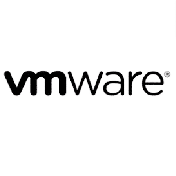Seminarinhalt
After you successfully complete this course, expect to be able to:
- Understand the unique capabilities of HPE NonStop servers
- Understand how availability, data integrity, high performance, and flexibility are assured with HPE Integrity NonStop servers
- Learn the concepts and facilities for application development and management, database and system management, networking, and security
- Learn how to use the full capabilities of your system through hands-on lab exer
Programm
Course Overview
- History and general characteristics of HPE NonStop servers
- Application areas where NonStop servers are commonly used
- Fault-tolerant operating system
- Introduce the Guardian and OSS user environments
Introduction to HPE NonStop Systems
- History and general characteristics of HPE NonStop servers
- Application areas where NonStop servers are commonly used
- Fault-tolerant operating system
- Introduce the Guardian and OSS user environments
NonStop Technical Library
- Accessing the NonStop Technical Library (NTL)
- Browsing and searching to find documents and information
- NonStop OS release, release version, and release version update
- Lab
NonStop Operating System
- Basic characteristics and functions of the NonStop OS
- Differentiate between a process and a program
- Why a message-based operating system?
- Major functions of the NonStop OS file and message systems
- Process pairs role in ensuring fault tolerance
Guardian Environment
- Guardian user IDs
- Accessing the NonStop server
- Managing the Guardian user environment
- Guardian file system
- TACL commands
- Labs
The Open System Services (OSS) Environment
- OSS definition, file system, types, and security
- NonStop facilities and tools based on OSS
- Guardian, OSS, and shared APIs
- Guardian and OSS text files
- Labs
Requesters and Servers
- The primary goal and OLTP requirements
- Application modularity basic design principle and advantages
- Pathway and the requester-server model
- Requester-server approach
- Lab
Pathway Application Environment
- The Pathway solution and components
- NonStop TS/MP and Pathway/iTS components
- Terminal Control Program (TCP)
- Non-TCP and RSC client access to Pathway servers
- iTP WebServer definition and processing modes
- Lab
Application Services
- Transaction processing environments available on NonStop servers
- Core services for applications on NonStop servers
- Service-Oriented Architecture definition, characteristics, and benefits
- SOA and the HPE NonStop server
Application Development Environments
- Tools and components
- HPE Enterprise Toolkit (ETK) — NonStop edition
- NonStop Development Environment for Eclipse (NSDEE)
- Visual Inspect
- Code coverage tools
- Emulation, accelerated, and native modes of operation
Database Management
- Relational database concepts
- Database file structures and terminology
- Relational databases available on NonStop servers
- Enscribe Database Record Manager
- NonStop SQL/MP and NonStop SQL/MX
- Labs
NonStop TMF and RDF
- Major threats to OLTP data integrity
- ACID properties of online transactions
- How Transaction Management Facility (TMF) protects data integrity
- Criteria for placing transaction delimiters in application code
- Remote Database Facility (RDF) functions and components
- NonStop AutoTMF and NonStop AutoSynch
- Lab
NonStop Server Hardware Architecture
- HPE NonStop Multi-core Architecture
- HPE NonStop Value Architecture
- HPE NonStop Advanced Architecture
- HPE Integrity NonStop NS-series and NB-series
- HPE Integrity NonStop X BladeSystem (NonStop X)
- Hardware fault tolerance
NonStop Server System Management
- NonStop server manageability strategy
- Element and enterprise management
- Problem detection and response tools
- HPE Systems Insight Manager (SIM) and NonStop plugins
- NonStop server system management issues
- What is different about managing a NonStop server?
- Labs
Security
- Basic security protection in the Guardian environment
- Security facilities in the OSS environment
- Safeguard software and auditing
- Additional HPE security products
Networking and Data Communications
- Networking requirements and connecting NonStop systems
- Features and functions of Expand networking software
- Industry-wide networking protocols
- Communications hardware available for NonStop servers
Information Sources and Education Planning
- Sources of information on NonStop servers and software
- Useful NonStop web sites
- Connect - International HPE Users’ Group and regional user groups
- NonStop professional services and support programs
Zielgruppen
- Application designers and developers
- System managers and network managers
- Data communications programmers
- Technical support personnel
Vorkenntnisse
Knowledge of basic computer and IT concepts



